The at-home workday during this pandemic might go something like this: Move from your laptop on the couch to perhaps the computer in your home office. In there, Zoom meetings fill the nine-to-five workday. Once you join a meeting, the screen fills with multiple video images of co-workers.  Where before you sat in a conference room and could see others sitting nearby, now you are looking at a video image of yourself as well as the rest of the group.
Where before you sat in a conference room and could see others sitting nearby, now you are looking at a video image of yourself as well as the rest of the group.
What effect does this have on us? What are the side effects of many hours of participating in video conferences and digital spaces?
What does this new form of communication mean during this moment in time, and what are the inherent shadow sides, the benefits, and evolutionary opportunities here?
The human data flow
The human nervous system operates like a flow of data. The more coherent the data is, the smoother and more fluid our subjective experience will be. In order to express ourselves clearly, we need to feel connected to our inner experiences and perceptions. 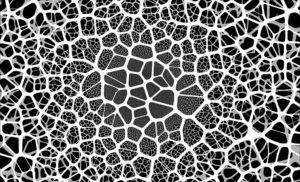 We need to access the messages and insights which arise from our bodies, emotions, thought processes, imaginations and visions, and intuitions and insights. Simultaneously, we need to maintain a relation to the world, people around us, our environment, and the systems we are part of. Perception of ourselves and others (internal and external) are the main data sources which inform our relations. Relationship is rooted in resonance and flow.
We need to access the messages and insights which arise from our bodies, emotions, thought processes, imaginations and visions, and intuitions and insights. Simultaneously, we need to maintain a relation to the world, people around us, our environment, and the systems we are part of. Perception of ourselves and others (internal and external) are the main data sources which inform our relations. Relationship is rooted in resonance and flow.
Remarkably, the human nervous system and technology networks share common elements and properties. One of these elements is in-formation, which beyond its common definition, can be considered as a process of coming into and maintaining a form. The nervous system in-forms the body and the body in-forms the brain. Many sophisticated feedback loops are based on the intelligent functionality of data flow. In much the same way, the human experience resembles a massive data flow that involves much more information than appears consciously in our awareness.
In-form-ation keeps us in a form. What does that mean?
The action of in-form is critical for the nervous system and the body because a human being is a form. This may seem obvious, but it’s important to start with the basics. This form wants to remain steady throughout life. It needs to keep its form steady just to live. In order to build structure and for our brains to undergo plasticity, we need to be able to create form. When we learn, we cultivate an inner form, which includes memory, habits, and structure. To live a life that is grounded and stable, we each need to continually be in-formed in new ways.
The internet provides information that our lives and societies depend on and informs our societal structures. We all know how it feels when we have great internet connection through WIFI or mobile internet, and we all know how it feels if emails barely exit our outbox. We all know how it feels when we stream a video and it works smoothly, and we know how it feels if the movie is frozen while you want to watch the most important parts.
 Big data drives our technology and influences our lives in unprecedented ways. But I would argue that this phenomenon is not new; our evolution is rooted in “big data.” We can imagine our perception as a large quantity of data. When I see another person, this vision and the form they take exists only in my perception. I see the person coated in my perception, a kind of filtered version of that person. I can’t tell if what I’m seeing and perceiving is actually true.
Big data drives our technology and influences our lives in unprecedented ways. But I would argue that this phenomenon is not new; our evolution is rooted in “big data.” We can imagine our perception as a large quantity of data. When I see another person, this vision and the form they take exists only in my perception. I see the person coated in my perception, a kind of filtered version of that person. I can’t tell if what I’m seeing and perceiving is actually true.
This is where communication plays an important role. In practicing deep listening, there’s a level of attunement and resonance that arises between two people. We will only know if our perception has accurately represented the other person when we become attuned to one another through all of our senses: body, mind, and emotions. Relating is a moment to moment process which requires constant updating; in this way we move through a rapid feedback loop that makes the data flow between me and another person smooth and flowing.
Though the “big data” of our human system has been with us for thousands of years, we’re now externalizing it in the form of a massive external technological neuron network which runs our lives in the form of phones, tablets, and computers. We have now become intimately familiar with the immediacy of data flow.
Human relation is exactly the same – it is wholly dependent on the immediacy of data flow.
The body is an ancient system. It has developed over millions of years to become the form that is integral to our existence today. What our ancestors went through can be felt in the development of our bodies, genetic expression, and our evolutionary learning. The body has a complex nervous system which acts like a human super computer with a cloud function. In forming relationships, we’ve created complex social networks and a more or less stable democracy (depending on where we live) which requires a great deal of computing power. All of our complex systems are based on streaming information, feedback loops, and updating mechanisms.
 The body is also the place where our emotions reside. Emotions are the basis for all our relations. Fear, joy, anger, sadness, shame, and love are our core emotions. When we are overwhelmed, we have the option to dissociate our emotional experience, pushing them into the subconscious. That is a very important function throughout our development, but it can also lead to side effects. Whatever can’t be experienced ends up being stored in the nervous system where it remains unintegrated and fragmented.
The body is also the place where our emotions reside. Emotions are the basis for all our relations. Fear, joy, anger, sadness, shame, and love are our core emotions. When we are overwhelmed, we have the option to dissociate our emotional experience, pushing them into the subconscious. That is a very important function throughout our development, but it can also lead to side effects. Whatever can’t be experienced ends up being stored in the nervous system where it remains unintegrated and fragmented.
The mind is the home of our rational and logic thinking, and it is also the place where innovation, visions, planning, and other executive functions are being coated into thoughts. Those become the blueprints of our world that we co-create together.
Even if it seems that we see here three different parts, they are actually all one. They only appear different when fragmented. Body-emotions-mind are actually one coherent flow of data. Every thought has an emotional flavor and resides in a specific location within the body. Inner coherence is the flow of data that connects all the developmental parts of our nervous system into one overall function. “Coherence” is a very important word for us as human beings.
Trauma
Our trauma, the inner fragmentation that happens as a reaction to an overwhelming experience, creates incoherence, and has a major impact on the way we experience life and technology.
At the time trauma (the inner mechanism in traumatizing circumstances) occurs, a person can experience high stress levels which lead to blocking parts of their nervous system and numbing it. Trauma creates inner fragmentation, and inner fragmentation creates a higher probability of outer fragmentation.
 The inner fragmentation of a person will most likely be visible in the person’s relational network. Leaders of systems usually create unconsciously inner fragmentation around themselves. We see this manifest in the symptoms these organizations, teams, and even countries demonstrate.
The inner fragmentation of a person will most likely be visible in the person’s relational network. Leaders of systems usually create unconsciously inner fragmentation around themselves. We see this manifest in the symptoms these organizations, teams, and even countries demonstrate.
Trauma creates an incoherence in the nervous system, as well as reduces the data flow and the relational capacity. It reduces our perception and creates recurrent patterns. Since trauma requires integration to be healed, all unintegrated energy in our system creates a form of incongruence and a lack of understanding. It also produces questions that are hard for us to answer.
When outside circumstances trigger our trauma, we often feel overly stressed, numb, reactive, and we won’t be able to meet situations with our full capacities of intelligence. We will constantly feel limited in facing the challenges life brings.
Another effect of trauma is feeling separate and isolated. In this state, the body, emotions, and mind are not synchronized. The mind often acts as the gate keeper to protect the hurt part of our psyche. Mental processes are not coherent with what we feel. This is why we might transmit to our environment a double message. We think A but feel B. People around us feel consciously or unconsciously that inner split, which is a sign of inauthenticity. We can feel when there’s a lack of authenticity. Our innate faculties of coherence can make the distinction.
Zeitgeist
Moving us constantly forward with the help of a strong evolutionary tailwind are science and technological advances. These are important steps forward for us as humanity, but the ruling power of rational thinking can also act as our defense system against anything touching our past trauma. This mechanism allows us to suppress the painful events that could arise from the depths of our unconscious. Rationality, logic, and refined scientific thinking are amazing evolutionary traits and achievements, and at the same time, can be the strongest inhibitors of our relational intelligence. Once the mind is disconnected from the body, becoming “the helicopter mind,” we aren’t able to connect with our feelings while we think.
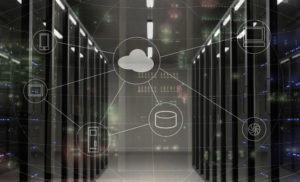 When heart and mind are separate, we’ve moved into a dangerous state. This state can lead to making decisions that exclude our humanity and lead to widespread hurt. The helicopter mind creates a cold state that may justify any actions as rational, without an emotional “check.” The integrated mind is a blessing.
When heart and mind are separate, we’ve moved into a dangerous state. This state can lead to making decisions that exclude our humanity and lead to widespread hurt. The helicopter mind creates a cold state that may justify any actions as rational, without an emotional “check.” The integrated mind is a blessing.
If technology strengthens such a split, we will experience the shadow side of humanity which is the stuff of our nightmares. If technology is being used and created from a place of inner coherence, it will advance our evolution to its highest good.
With this context, I’d like to explore how to positively use the internet and video conferencing. What are the traps and ways these technologies can drain us as users? What is the developmental opportunity here and how can we learn something powerful as humanity?
We want to stay informed, while preserving the beauty and essential nature of our form. We want to both keep the evolutionary complexity of our ancestors and continue their ways of being in form.
The warm and intimate Internet
When we see our colleagues or loved ones on our computer screens, not only our minds are affected, but also our emotions as we look directly at their faces and expressions. In this way, more data is flowing than what we typically experience just on our phones. And this level of data is significantly greater than what we used to share in letters.
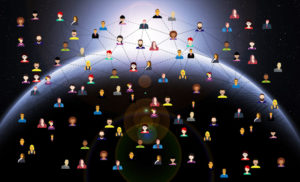 The internet is a digital space that can be embodied. Not only can it be, it should be. Since the tech space has been developed through our rational and scientific capabilities, it speaks mainly to the mind. But now when we see people we love and appreciate, we want to have a deep experience that comes as close to an in-person relationship as much as possible.
The internet is a digital space that can be embodied. Not only can it be, it should be. Since the tech space has been developed through our rational and scientific capabilities, it speaks mainly to the mind. But now when we see people we love and appreciate, we want to have a deep experience that comes as close to an in-person relationship as much as possible.
It’s possible to train ourselves to communicate in this new way. We can train to deeply relate to other people on the screen as if they were in the room with us. We can sense their bodies as if they were sitting with us in a room. We can resonate with their emotional experiences as if they were in the room with us. We can, of course, relate to their thinking, which may be easier for most of us.
All of this requires practice because it is easy to not include our body awareness when we connect virtually. It is much easier to drop back into mental processing. We can train ourselves to see people on the screen by using the whole body. To do this, we first need to feel our own bodies. Inner body awareness is to consciously take part in the data flow that informs my body and my brain. There are parts of my body I can feel very well and there might be others that I might not be able to feel.
Virtual relating
To move beyond communicating just with our minds, we need to learn virtual relating. This is also important to prevent the virtual experience from becoming draining. We can learn to create warm and close spaces. This is important, of course, for our family meetings, but is also important for our business meetings while we are working from home and especially for those who conduct coaching and therapy sessions online. Since virtual meetings can also lead to reduced movement, a consistent practice to engage in digital spaces in healthy ways will help sustain us in the long run.
Recommended three-step practice for Zoom meetings:
• Self-contact
• Conscious attunement to the other
• Group coherence
Attunement to myself – self-contact
Relation always starts with myself. Relation means a felt connection. Can I feel my body? What are the areas of my body that I feel well? Those are the areas of my nervous system that are open, flowing, perceptive, and where I am aware of myself. I can drop into my body using the power of my breath. My breath, which began moments after my birth, is a deeply wired function in the body and nervous system. If I slow down my exhalation and exhale longer, I can use the wave of my breath to drop into my body. I can do this with multiple breaths, dropping deeper into the body. This process creates a feeling of relaxation. Now I can connect to parts of my body that I feel well. The resourced parts of my body help me to become more aware of my entire body. Once I know what those are I can use them as a fast track to connect to myself.
 Once I am connected to the energized parts of my body, I can deepen this seeing into a higher resolution. I may have sensations of an inner flow, streaming, pulsing. After staying with that for some time and not reacting to the mental distractions of my mind, I can expand my awareness from the resourced parts to the more stressed, tense, or tight parts of my body. I also might become aware of parts of my body that I can’t feel at all. I remain present with all that arises. If I do that for several minutes (before starting a Zoom call, for example), I can become well centered in my body.
Once I am connected to the energized parts of my body, I can deepen this seeing into a higher resolution. I may have sensations of an inner flow, streaming, pulsing. After staying with that for some time and not reacting to the mental distractions of my mind, I can expand my awareness from the resourced parts to the more stressed, tense, or tight parts of my body. I also might become aware of parts of my body that I can’t feel at all. I remain present with all that arises. If I do that for several minutes (before starting a Zoom call, for example), I can become well centered in my body.
My body is the cup, the vessel for my emotions. Now I can expand my awareness into my current emotional experience. I can become aware of a core emotion or maybe sense that I am numb.
Once I feel this, I continue presencing my mental activity – is my mind racing or calm? Is my mind open, inspired, spacious, or tight and stressed? I can feel my mind.
Then I can have a look at which part of me is aware of all these perceptions. What is the conscious awareness that is aware of my body, emotions, thinking? I can stay with the exploration for a few moments.
Now I’ve established the self-contact. Only once I feel myself, I can reach out to others and feel them. Virtual relating requires felt awareness of each other. Since our nervous systems naturally receive relational cues from people while in the same room (movement, gestures, body posture), while we are online we need to consciously bridge that virtual relational gap.
Attunement to others – virtual relating
Now I am ready to do the same with people I see on my screen. I can take a moment to tune in with one or many people on my screen and do the same process. I look through and with my whole body. My body senses your body. Our bodies are very intelligent, and we receive a lot of information through our bodies, especially where we are open and receptive.
 I can resonate with the people on my screen emotionally and get a sense of their emotional experience. I can feel how relationally open or closed people appear to feel. The focus of this practice is not to make an ideal experience happen with one another, but to find out and actively feel the current state of all participants.
I can resonate with the people on my screen emotionally and get a sense of their emotional experience. I can feel how relationally open or closed people appear to feel. The focus of this practice is not to make an ideal experience happen with one another, but to find out and actively feel the current state of all participants.
When I attune to other people, which means that our nervous systems move into a state of coherence, we strengthen the data flow of our relating together. Ultimately, there is no fixed relation but only the process and experience of relating. It’s a constant process. It’s a streaming, not a downloaded, movie.
When we sync our nervous systems, we create a field that is wholly present and alive. This field becomes a solid foundation for collaboration and meeting that is alive and true.
For those who work as coaches or therapists, we can go a step further and sense even deeper into how people attune to each other. Can we feel how we sense one another? Can we feel how our nervous systems attune to each other? To do this requires a very fine perception, which we learned as part of our foundational development starting at birth.
“I feel you feeling me” is the basic building block of relational intelligence.
Attunement to the group – group coherence
Now we can go to step 3, which is to feel the group coherence that we have built together through the relational attunement to each person on the screen. Through the relational coherence we create a field together, which is like weaving a carpet. Now we can feel the whole system that is created by all of us being present together. There is a group resonance body and there is a group presence. That group presence is a very powerful resource. The higher it is, the more intelligent is the network. When every participant of a group feels the whole group, the group is represented in the inner perception of everyone. If we do that consciously and with awareness of our feeling, it intensifies the coherence of the group field.
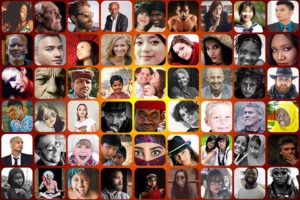 Higher intelligent networks have higher systemic coherence. Data flow is increased, not only because the content is a higher level of complexity. It increases because the whole system is becoming more intelligent including everyone who exists within that system. Group coherence gives something back to each participant as well: the possibility of achieving higher functionality and intelligence. When we each consciously invest time and energy to create systems that have a high energy flow, we create a powerful IT network. The stronger our servers are and the more intelligent their connecting system is, the higher the computing rate.
Higher intelligent networks have higher systemic coherence. Data flow is increased, not only because the content is a higher level of complexity. It increases because the whole system is becoming more intelligent including everyone who exists within that system. Group coherence gives something back to each participant as well: the possibility of achieving higher functionality and intelligence. When we each consciously invest time and energy to create systems that have a high energy flow, we create a powerful IT network. The stronger our servers are and the more intelligent their connecting system is, the higher the computing rate.
Attunement is the inner IT of all times. It is the inner 5G network, minus negative radiation, and with many benefits for humanity.
Technology reveals to us what we have carried within us for a long time. We designed our tech worlds of technology and science only through replicating our inner architecture. This is how we learned to understand the intricacies of streaming.
Human relation is data flow par excellence. In its healthy form, it’s the streaming that happens in every moment when we connect to each other. In everyday, random meetings, we don’t need such a high flow of data, but when we engage in meaningful and concentrated work or relationship spaces, we do know how to establish these. We did that as humanity over hundreds of thousands of years. We have already been trained.
Including the unintegrated past
While engaging in these practices of virtual relating, we need to remember that we carry many wounds inside and throughout our group fields. In this way, much of the data network that underlies society is not functioning well. We might see this as reduced data transfer in the nervous system. That’s why my ability to relate to myself, to you, and to groups might be reduced. We need to know this because we might be confronted with the side effects every day.
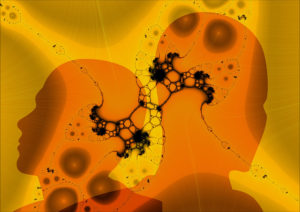 Intimate relationship arguments, difficult moments with people at work, or challenges as parents – we all know what it feels like when the data flow of streaming isn’t working well. Then we need to go to our hard disc and look for old ways and data on how to deal with the moment. We go back to old behaviors and patterns of relating that are not fresh, innovative and creative now, but data that we have already used many times in the past, which we know are limited.
Intimate relationship arguments, difficult moments with people at work, or challenges as parents – we all know what it feels like when the data flow of streaming isn’t working well. Then we need to go to our hard disc and look for old ways and data on how to deal with the moment. We go back to old behaviors and patterns of relating that are not fresh, innovative and creative now, but data that we have already used many times in the past, which we know are limited.
Repetitive patterns of relating are mostly built on trauma, unconscious ways of relating and our past. We often repeat our past and try to solve conflicts that way.
We need to discover how to stream relationships through the flow of presencing. Since we have built digital streaming, we can now mirror how this works in our everyday relationships.
Either we have emergent and present relating, or we need to use old data to solve the issues of the current moment. If we can manage to read the signs of those wounds, if we are able to not ignore our reactivity or other symptoms trauma creates in our relational environments, but are able to stay present to them, we can slowly become a support for integrating thousands of years of human behavior and suffering. We will be able to develop beyond splitting, separation, isolation and reactivity, into a much more interconnected and interdependent world.
Thomas Hübl (edited by L. Shridhare, I. Krause)
